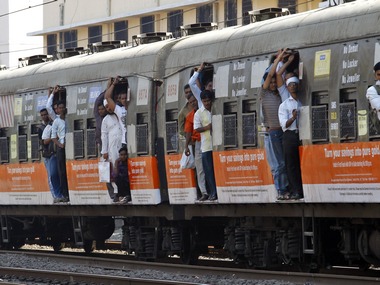When 2,793 train services transport close to seven million people daily, acquiring the repute of being Mumbai’s lifeline, what does 75 more trains mean?
Not much except that the travel on those trains could become only just a tad easier. It could even be imperceptible because despite the Mumbai Urban Transport Project (MUTP) - I and II the crowding in the trains are estimated to be less by only a third.
When trains carry mind-boggling crowds-it forced the Indian Railways to invent a new description, ‘super dense crush capacity’ which made ‘overcrowding’ trite and pointless-what has been enabled is not enough mitigation.
People continue to scramble for trains from overcrowded-sorry, super dense crush of people-platforms, lurch and grab a toehold and nurse a sense of being molested with the other person so close, it could be almost a sexual invasion. They stand packed smelling the other person’s sweaty armpit all the way to the destination, often for an hour and more.[caption id=“attachment_244498” align=“alignleft” width=“380” caption=“Commuters stand at the open doorways of a suburban train during the morning rush hour in Mumbai. Reuters”]  [/caption]
Because of the increased number of commuter trains-they are called ’locals’-and some speeding up, probably the other guy is perhaps a quarter of an inch further than you. It is a fact that sometimes 10 persons stand within a square meter of space and you cannot reach for the handkerchief if a sneeze was travelling up the nasal passages.
With the conversion of the power supply and running of motors on trains run by Western Railway from 1,500 volt DC (direct current) to 25,000 DC (direct current), we were told trains can be speeded up. But that was in theory. For before that happened, signals had to be reworked, the tracks used by long-distance trains emptied of them.
The Central Railway which operates 373 trains more trains than the Western does is nowhere near this DC to AC conversion. That indicates a longer wait for improved services on this sector.
The suspicion is that when these trains are speeded up, the 75 new trains can be slipped in between the other and hopefully faster locals and give that just another wee bit of travelling comfort. It cannot ever be like the Swiss commuter trains where 70 percent occupancy implies being overcrowded. That would be a pipe dream.
No doubt the introduction of 1,500 new coaches would make that travel in a crowded train smoother but such infusion of rolling stock is not an overnight possibility. Nothing in the railways, as we have historically witnessed, is rapid fire. There is a lag between thought and action, and complete fulfilment of promise. They take time, like the travel does. Given the gigantic task, they are naturally sedate.
There is a new acknowledgement in Dinesh Trivedi’s maiden Railway Budget that while services and their quality on the linear dimension of the Mumbai metropolitan region was required, if for nothing else than to try and match the demand, the metropolitan region requires a newer thrust: provide a East-West connectivity within the metro that would have to bypass Mumbai, the region’s heart.
This was manifest in the announcement that between Thane and Panvel, the trains would run with a dozen coaches instead of the nine-coach trains. Navi Mumbai, even if late, is slowly morphing into a city with job opportunities and people are flocking there not only to live and work but also travel to from rest of the region for livelihoods. Adding three coaches per train means stepping up capacity by a third, which is easier than running more trains.
Had this announcement come accompanied by a resolve to convert the Panvel-Diva-Vasai line into a vibrant commuter line, it would have meant a stimulus to not only growth of economic activity of the areas north of Mumbai in the metropolitan region but cutting off the need to travel to Mumbai. But then, things happen with baby steps in the realm of infrastructure. Perhaps, only after Navi Mumbai goes the Mumbai way, overcrowded, unliveable would the need to develop the other regions strike the planner.
Come to think of it, it is not the Railway Ministry’s job to plan that way. The plan has to come from the State Government, the civic bodies of the cities-there are seven municipal corporations and its multiples of smaller local self-governments-in that region sans Mumbai. They, except for Navi Mumbai, seem content to be dormitories for Mumbai. So why should the Indian Railways bother?


)
)
)
)
)
)
)
)
)



